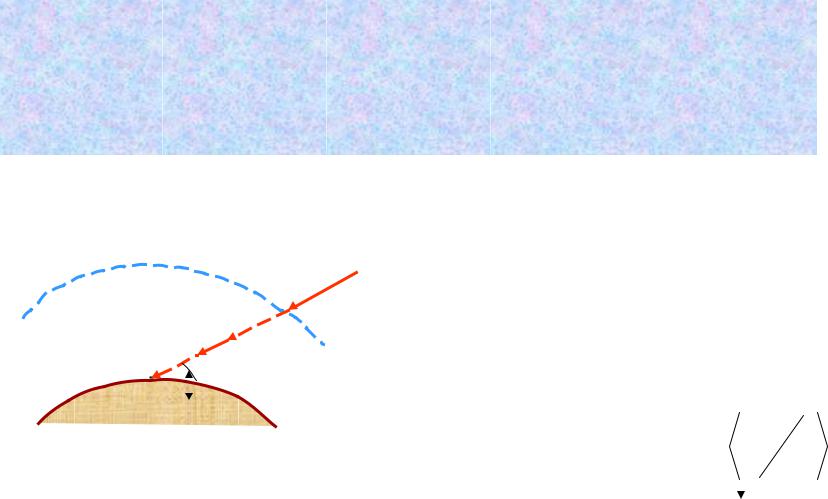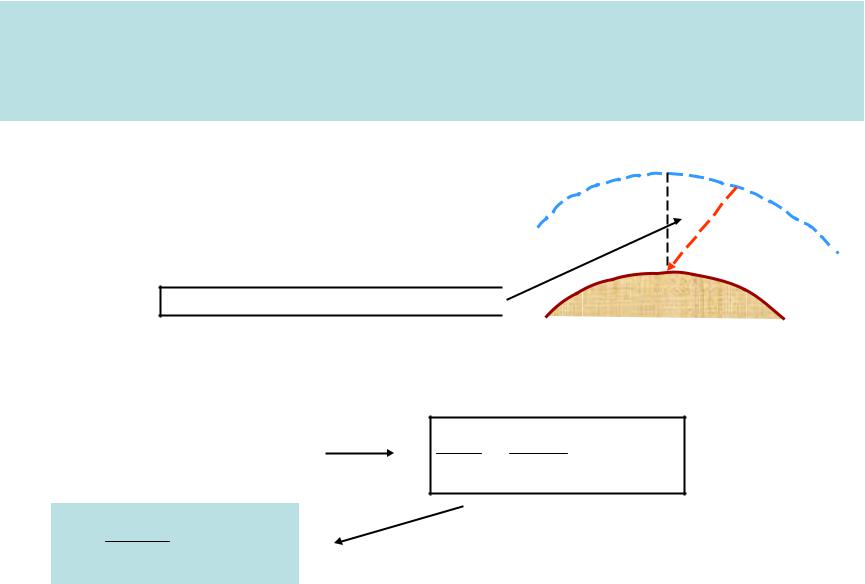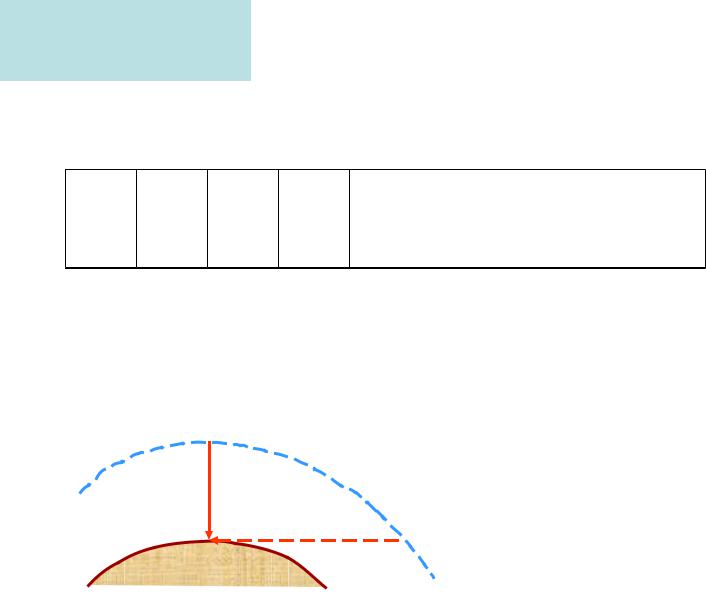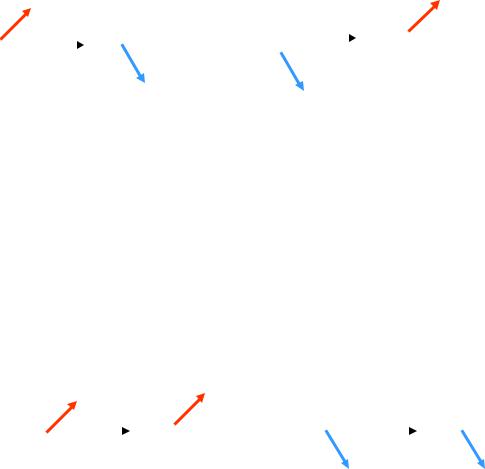
- •The laws of SR extinction in the atmosphere
- •Optical mass of the atmosphere
- •According to formula
- •Optical depth and optical mass relationship
- •Transmission coefficient
- •The more the content of the absorbing gases and aerosols in the atmosphere,
- •The total flux of solar radiation
- •When passing through the atmosphere, the SR is not only being attenuated, but
- •The atmosphere turbidity factor
- •Direct solar radiation (DSR)
- •Cloudiness makes an appreciable impact on the DSR. At overcast condition it completely
- •Scattered (diffused) radiation (DR)
- •Relationship between DSR and DR
- •At cloud free sky i 0,1 I

The laws of SR extinction in the atmosphere
Suppose a monochromatic flux of radiation falls on a point A1 at the top of the atmosphere.
|
A2 |
|
|
|
|
|
|
|
|
Radiation flux at point B’ is |
I ' |
|
|||
|
|
|
|
|
|
|
|
|
|||||||
|
|
|
|
|
|
|
|
|
|||||||
|
|
|
|
|
|
|
|
|
|
||||||
|
|
|
|
|
|
|
A1 |
|
and at point B is I ' |
dI ' |
|
|
|||
|
|
|
|
|
|
|
|
|
|
||||||
|
|
|
|
|
|
|
|
|
|
||||||
|
|
|
|
|
|
|
|
|
|
||||||
|
|
|
|
|
|
|
|
|
|
||||||
|
|
|
|
|
|
|
|
|
|
||||||
|
|
|
|
|
|
|
|
|
|
' |
|
|
|
|
|
|
|
|
|
|
|
|
|
|
|
|
|
|
|
||
|
|
|
|
|
|
|
|
|
|
|
|
|
|
||
|
|
|
|
B |
B’ |
|
|
|
The value dI is extinction |
|
|
||||
|
|
|
|
|
|
|
|
|
|||||||
|
|
|
|
|
|
|
|
|
|
|
|
||||
|
|
|
|
|
|
|
|
|
|
of the radiation flux as it passes |
|||||
|
A |
|
|
|
|
|
|
||||||||
|
|
|
|
|
|
|
|||||||||
|
ho |
|
|
|
|
from B’ to B. |
|
|
|
|
|||||
|
|
|
|
|
|
|
|
|
|
m2 |
|
||||
|
|
|
|
|
|
|
|
|
|
|
|
|
|||
According to Bouguer’s law |
dI ' I ' dl' |
|
|
kg |
|||||||||||
AA1 l |
B' B |
dl' |
|
dI |
' |
dl' |
|
|
|
|
|||||
|
|
|
|
||||||||||||
Mass extinction index |
|||||||||||||||
|
I ' |
||||||||||||||
|
|
|
|
|
|
|
|
|
|
|
|
|
|||
To obtain the value of the radiation flux at point A, the last formula is to be integrated from the top (A1) to the ground (A).
1

|
I |
dI ' |
|
|
|
|
l |
|
|
|
ln |
I |
|
|
l |
dl' |
|
|||||||
|
|
|
|
|
dl' |
|
|
|
|
|
|
|
||||||||||||
|
|
|
|
|
|
|
|
|
|
|
|
|
|
|
||||||||||
|
|
|
|
|
|
|
|
|
|
|
|
|
|
|
|
|
|
|||||||
|
I ' |
|
|
|
|
|
|
|
|
I 0 |
0 |
|
|
|
||||||||||
|
I 0 |
|
|
|
|
0 |
|
|
|
|
|
|
|
|||||||||||
|
|
|
|
|
|
|
|
|
|
|
|
|
|
|
|
|
|
|
|
|
|
|
|
|
|
|
|
|
|
|
|
|
|
|
|
|
|
|
|
|
|
|
|
||||||
M0 is mass of |
|
|
|
|
M |
0 |
|
|
|
M |
l |
|
|
|
|
M is mass of |
||||||||
|
|
|
|
|
|
|
|
|
|
|||||||||||||||
|
|
|
|
|
|
|
|
|
|
|
|
|
|
|
|
|||||||||
vertical air |
|
|
|
|
|
dz |
|
|
dl' |
|
|
|
|
slanted air column |
||||||||||
column |
|
|
|
|
|
|
|
|
0 |
|
|
|
|
|
0 |
|
|
|
|
|
|
|
||
|
|
|
|
|
|
|
|
|
|
|
|
|
|
|
|
|
|
|
|
|
|
|
||
M M0
Absorption and diffusion is different at different altitudes due to the fact that the composition of the air is not homogeneous.
|
|
|
|
|
|
|
Ozone |
|
|
Absorption |
|
|
|
|
|
|
|
|||
|
|
|
|
|
|
|
Oxygen |
|
|
|
|
|
|
CO2 |
|
|
|
|
|
|
Water vapor |
|
|
|
|
|
|
|
|
|
Scattering |
|
||
|
|
|
|
|||
aerosols |
|
|
|
|
|
|
|
|
|
|
|
|
|
|
|
|
|
|
|
|
Molecular
Molecular +
aerosol
Aerosol
2

Optical mass of the atmosphere
There is a good relation |
|
M |
|
|
m M0 |
||||
between optical mass of |
||||
the atmosphere (m) and |
|
|
|
|
|
|
|
||
altitude of the Sun (ho) |
|
|
|
|
Let’s inspect the area A1A2A 
A1
A2
A
At high altitude of the Sun ho, this area can be approximated as rectangular triangle. A1A is hypotenuse, A1A2 and A2A are legs.
AA2 AA1 sin ho
m sinh1 o cosec ho
AA1 1 cosec ho
AA2 sinho
Optical mass of the atmosphere is equal to cosecant of the Sun altitude.
3

m |
1 |
cos ec h |
This formula allows for obtaining |
|
satisfactory results at ho>30°, the curvature |
||||
|
||||
|
|
o |
of the Earth’s surface and Sun beam |
|
|
sinho |
|||
|
|
|
refraction must be accounted for at ho>30° |
|
ho |
90 |
60 |
40 |
30 |
10 |
5 |
3 |
0 |
m |
1 |
1,16 |
1,55 |
2 |
5,3 |
10,4 |
15,4 |
35,4 |
Optical mass of the atmosphere is quick to rise with decrease of the Sun altitude
ho=90°
m=1
|
m=35,4 |
ho=0° |
A |
|
|
|
|
4

|
I |
|
|
|
|
l |
|
|
|
|
|
|
|
|
|
|
|
|
|
|
dz |
|
|
|
|
|
|
ln |
|
|
|
dl' |
|
|
|
M |
M |
0 |
|
|
|
m |
M |
|
|||||||||||
|
|
|
|
|
|||||||||||||||||||||||
|
|
|
|
|
|
|
|
|
|
||||||||||||||||||
|
I 0 |
|
|
|
|
|
|
|
|
|
|
|
|
|
|
|
M0 |
||||||||||
|
|
|
0 |
|
|
|
|
|
|
|
|
|
|
|
|
|
|
0 |
|
|
|
|
|||||
|
|
|
|
|
|
|
|
|
|
|
|
|
|
|
|
|
|
|
|
|
|||||||
|
|
|
|
|
|
|
|
|
|
|
|
|
|
|
|
|
|
|
|
|
|
|
|
|
|
|
|
|
|
|
|
|
|
|
|
|
|
|
|
|
|
|
|
|
|
|
|
|
|
|
|
|
|||
|
|
|
|
|
|
|
|
|
|
|
|
|
|
|
|
|
|
|
|
|
|
|
|
|
|
|
|
|
|
|
|
|
|
|
|
|
|
|
|
|
|
|
|
|
|
|
|
|
|
|
M mM0 |
||||
Denoting M0 |
|
ln |
|
I |
|
mM0 |
|
|
|
|
|||||||||||||||||
|
|
|
|
|
|
|
|
|
|
|
|
||||||||||||||||
|
I |
0 |
|
|
|
|
|
|
|
|
|
||||||||||||||||
|
|
|
|
|
|
|
|
|
|
|
|
|
|
|
|
|
|
|
|
|
|
|
|
||||
|
|
|
|
|
|
|
|
|
|
||||||||||||||||||
We obtain |
|
I |
|
I 0 exp m |
|
|
|
|
Second Bouguer’s formula |
||||||||||||||||||
|
|
|
|
|
|
||||||||||||||||||||||
Both Bouguer’s formulas are known as Formulas of solar radiation extinction in the atmosphere
Dimensionless magnitude |
|
|
|
|
M |
0 |
|
dz |
|
|
|
|
|
|
|
|
|
|
|||
|
|
|
|
|
|
|
|
0 |
|
|
|
|
|||||||||
Solar radiation extinction index or OPTICAL DEPTH |
|
|||||||||
of the atmosphere |
|
|
5 |
|||||||

According to formula |
I |
I |
0 e |
m |
|
Value m is small |
|
Value Iλ is large |
|
||
Value m is large |
|
Value Iλ is small |
|
After sunrise value m is quick to decrease. It means that value Iλ is quick to increase. Before sunset value m is quick to increase. It means
that value Iλ is quick to decrease.
Near the noon hours the solar radiation flux is slow to change its value.
In case the air density is constant (the beam spreads horizontally and a short distance)
|
I 0 exp k l |
|
|
|
|
|
Volume |
I |
|
K |
|||||
|
|
|
|
extinction index |
|||
|
|
||||||
|
|
|
|
|
|
|
|
6

Optical depth and optical mass relationship
I I 0 exp m
|
|
I |
|
exp m |
Assuming |
I |
exp 1 |
||||||
|
|
I |
|
I |
|||||||||
|
|
0 |
|
|
m 1 |
|
0 |
|
|||||
|
|
|
|
|
|
|
|
|
|
|
|||
|
|
|
|
|
|
|
|
|
|
|
|||
|
|
|
|
|
|
|
|
Radiation flux attenuated |
|||||
m |
|
1 |
|
We obtain that |
|
||||||||
|
|
|
1 |
|
|
|
in e times |
||||||
|
|
|
|
|
|
|
|||||||
|
|
|
|
|
|
|
|
|
|
||||
|
|
|
|
|
|
|
|
||||||
|
|
|
|
m |
|
|
|
||||||
|
|
|
|
|
|
|
|
|
|
|
|||
Optical depth of the atmosphere ( ) is the magnitude inverse to that optical mass, which attenuates the
radiation flux in e times.
7

Transmission coefficient
For better understanding attenuation process it is worth introducing one more notion transmission coefficient (коэф.прозрач.)of the atmosphere (Pλ).
 P e
P e
I I 0 e m |
|
|
I |
|
I |
|
|
|
Pm |
Adopting m=1, i. e. |
||||||
|
|
|
|
|
||||||||||||
|
|
|
|
|
|
|
|
|
|
|
|
0 |
|
the Sun is in zenith |
||
|
|
|
|
|
|
|
|
|
|
|
|
|
|
h 900 |
||
|
|
|
|
|
|
|
|
|
|
|
|
|
|
|||
|
|
|
|
|
|
|
|
|
|
|
|
|
|
|
o |
|
|
(I )90 I 0 P |
P |
I 90 |
Since I 90 I 0 |
||||||||||||
|
|
I 0 |
|
P 1 |
|
|||||||||||
|
|
|
|
|
|
|
|
|
|
|
|
|
|
|
||
Transmission coefficient is the fraction of the solar radiation flux, which reaches the Earth surface as the Sun is in zenith.
8

The more the content of the absorbing gases and aerosols in the atmosphere, the more the value of for a given wavelength, and the less the transmission coefficient.
|
|
P |
|
|
P |
|
|||||
|
|
Important: Transmission coefficient of monochromatic flux depends on physical state of the vertical air column and does not depend on altitude of the Sun.
Transmission coefficient is also a function of wavelength. For the ideal atmosphere (no water vapor, no admixtures), this coefficient increases with the increase of the wavelength since the scattering of the shorter wavelengths is more intensive than the longer ones.
|
|
P |
|
|
P |
|
|
9

The total flux of solar radiation
For practical purposes we need to know total (integrated) flux of
SR but monochromatic.
I I d I 0 Pmd
0
Due to very intricate dependence of the transmission coefficient on wavelength, it is not easy to take this integral. The only way to make necessary calculation is to use average values of P and
I I0 Pm ; |
I I0e m |
We may do it because in this case transmission coefficient P also shows the fraction of SR that reaches Earth’s surface when the Sun is in zenith:
However, in this case P value depends on the optical mass m.
10
